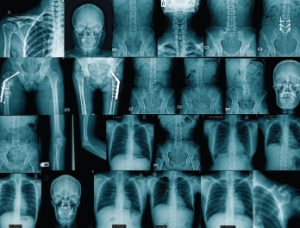
Tridsanu Thopet / SHUTTERSTOCK.COM
SAN DIEGO—At the 2017 ACR/ARHP Annual Meeting Nov. 3–8, experts discussed improving bone health in the U.S., gave tips on bone health disorders in pediatrics and reviewed new translational science findings for joint conservation in early osteonecrosis.
E. Michael Lewiecki, MD, director of the New Mexico Clinical Research & Osteoporosis Center in Albuquerque, N.M., called on physicians to help improve osteoporosis care, which has declined over the past several years due factors that include fear of drug side effects, dual X-ray absorptiometry (DXA) reimbursement declines and competing guidelines.
After more than 10 years of dropping hip fracture rates, the rate has plateaued over the past several years, leading to a sizable gap between the actual and projected numbers of 14,000 additional hip fractures and 2,800 additional deaths that could be attributed to fractures, all of which might have been prevented, Dr. Lewiecki said.
“This is why it’s now called a crisis,” he said. “My big audacious goal is to reduce the osteoporosis treatment gap from 80% to 20% in the next 10 years. I’d like to deputize each of you in this audience. I’d like to empower you to do something about this. And you can. There are things that we can all do to help.”
Specifically, Dr. Lewiecki said physicians can:
- Develop a fracture liaison service (FLS) system that identifies those at risk of secondary fracture and delivers the treatment they need. This typically involves an FLS coordinator (often a nurse practitioner or physician’s assistant) who uses software to track patients;
- Improve DXA reimbursement and employ DXA best practices. “Poor DXA reimbursement leads to poor DXA quality,” he said, urging physicians to work to promote better reimbursement. He also called on physicians to bone up on best practices, with up-to-date DXA training, certification and possibly facility accreditation;
- Treat to target. An American Society for Bone and Mineral Research-National Osteoporosis Foundation task force suggests treating to a target T score of -2.0, rather than -2.5, could increase confidence “considering the measurement error with the DXA test”; and
- Knowledge-share through Project ECHO, which involves case-based discussions and brief didactic presentations via videoconference. The project now sports 139 hubs in 23 countries, covering more than 45 diseases, Dr. Lewiecki said.
Catherine Gordon, MD, MS, director of adolescent and transition medicine at Cincinnati Children’s Hospital in Cincinnati, discussed how to treat and manage pediatric patients with bone disorders, from primary osteogenesis imperfecta to secondary bone disorders, including juvenile idiopathic arthritis (JIA), glucocorticoid-induced osteoporosis and anorexia nervosa (AN).
For those with anorexia, JIA and other disorders, she said it’s important to keep in mind that DXA bone mineral density (BMD) Z-scores can be misinterpreted because these children can have short stature or delayed puberty. In JIA, she said, children will often come back with normal DXA Z-scores at the lumbar spine. Even though they may be asymptomatic, consider performing an X-ray because these children have a high prevalence of compression fractures.
“DXA may not be a sensitive tool,” Dr. Gordon said. “Spinal radiographs are likely underordered in this group.”
She said tips to optimize bone health in these patients include:
- Considering the menstrual cycle as a “vital sign,” with amenorrhea a cause for concern about a potential bone disorder;
- Taking BMD measurements in at-risk patients with a strong family history;
- Encouraging regular exercise but not overdoing it; and
- Emphasizing good nutrition with adequate calcium and vitamin D.
Stuart Goodman, MD, PhD, professor of orthopedic surgery and bioengineering at Stanford University in Palo Alto, Calif., discussed new findings in cell therapy in the treatment of osteonecrosis, a general term for a variety of conditions that result in death of the cellular components of bone.
‘I don’t think about a total hip replacement first. I think of how we can save this joint.’ —Dr. Goodman
In his lab, researchers assessed results of local debridement with osteoprogenitor cell grafting in cases of knee osteonecrosis in 12 young patients with an average age of 23, four of whom had underlying systemic lupus erythematosus. The cases involved salvageable joints (i.e., involving the joints’ weight-bearing area, but with the cartilage intact).1
The patients initially reported a constant aching in the knees with functional deficits, but, on imaging, showed no collapse of the femoral condyles and no incongruity of the joint surface. But all the osteonecrotic lesions involved at least a third of the condyle width.
At five years of follow-up, no patients had gone on to further surgery, and none were taking medication for knee pain. They had good scores for knee function.
Cell therapy has produced good results in osteonecrosis of the hip as well, Dr. Goodman said.
He said there’s room for improvement in identifying patients who will respond well to this approach, and in locating and classifying lesions better. But he said cell therapy could be an option that may spare many patients joint replacement.
When he sees a young patient with osteonecrosis, “I don’t think about a total hip replacement first,” he said. “I think of how we can save this joint.”
Thomas R. Collins is a freelance writer living in South Florida.
Reference
- Goodman SB, Hwang KL. Treatment of secondary osteonecrosis of the knee with local debridement and osteoprogenitor cell grafting. J Arthroplasty. 2015 Nov;30(11):1892–1896.

